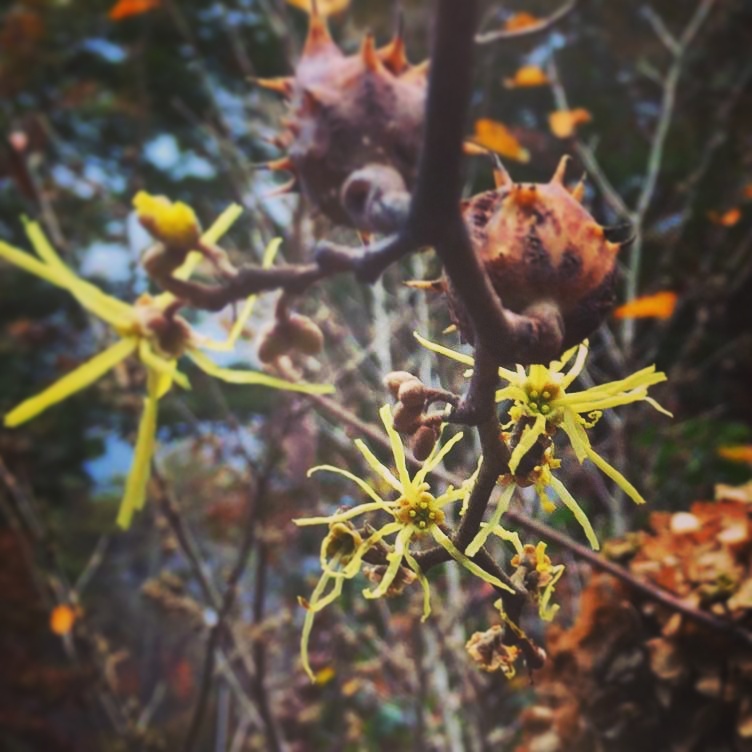This week’s plant for #WildEdibleWednesday is Rhus typhina, or Staghorn Sumac. Dramatic and exotic-looking with its bright red fruiting bodies, sumac is part of the Anacardiaceae family of plants that includes cashews, mangoes, and pistachios, as well as Brazilian pepper, poison ivy, and poison oak.
Read moreWild Edible Wednesday 6/12 - Broadleaf Plantain
“If you’ve ever taken one of our courses at SARCRAFT, there’s a 100% chance we’ve at least mentioned Plantain, if not shown you how to use it. We’ve always said that if you’re going to learn one edible and medicinal plant, it should be this one.”
Read moreWild Edible Wednesday 5/22 - Oxeye Daisy
“The Greeks dedicated the flower to Artemis, the goddess of femininity, as it was useful for treating women’s issues and was thought to bring fertility. Even today, it’s considered good luck in some circles for women who are trying to get pregnant to leave daisies at the ruins of temples dedicated to Artemis.”
Read moreWild Edible Wednesday 1/30 - Striped Wintergreen (Pipsissewa)
“Striped wintergreen’s primary value lies in being a powerful, reliable, year-round medicinal plant. It is a true lifesaving herb in the dead of winter, with a wide range of uses.”
Read moreWild Edible Wednesday 1/9 - Leatherleaf Mahonia
“Often overlooked as a bland landscape plant or an semi-invasive shrub, this is, in fact, a valuable medicinal plant with a fascinating backstory that involves plant smuggling and China’s Opium Wars.”
Read more#WildEdibleWednesday 1/2 - Southern Magnolia
“Magnolias aren’t native to the more hilly and mountainous regions of Southern Appalachia, however, they will naturalize here. What that means for us it that nearly every magnolia you see in our area is descended from a tree someone planted.”
Read more#WildEdibleWednesday 11/7 - American Sweetgum
“If you were around SARCRAFT in the early days, you would have heard Jonathan and I refer to Sweetgum as the most useless tree in the forest, only good for making toothbrushes (which we’ll touch on in a minute.)”
Read more#WildEdibleWednesday 10/31 - Witch Hazel
“Oh, and about that weird name… why is it witch hazel? Well, there are two explanations….”
Read more#WildEdibleWednesday 10/24 - Dogwood
“During the Civil War, the Yankees put us in a tight spot by blockading our ports, preventing any shipments of supplies or medicine from coming through from the outside. In the Deep South, malaria and yellow fever were serious problems back in that day, and were taking many desperately needed men out of the action on the battlefield.”
Read more#WildEdibleWednesday 10/10 - Goldenrod
“Goldenrod gets a bad rap for causing fall allergies, and it’s not surprising why… the bright yellow flower heads look like pure pollen. However, it’s really a case of mistaken identity….”
Read more#WildEdibleWednesday 10/3 - Mullein
“Mullein has a whole host of great uses for bushcrafters and other outdoorsmen, as well. Its most famous and obvious non-medicinal use is as, well, toilet paper. If you’ve ever felt a mullein leaf, it’s a pretty natural idea to use them for this purpose.”
Read more#WildEdibleWednesday 9/12 - Orange Jewelweed
Medicinally, jewelweed really only has one application: Used externally, as a poultice or decoction. However, in this application, it’s fantastic.
Read more#WildEdibleWednesday 9/5 - Kudzu
Although non-native and highly invasive, Kudzu has become as much a part of the South as barbecue, pecan pie, dirt track racing, and smiling and waving at random strangers.
Read more#WildEdibleWednesday 8/22 - Staghorn Sumac
Dramatic and exotic-looking with its bright red fruiting bodies, sumac is part of the Anacardiaceae family of plants that includes cashews, mangoes, and pistachios, as well as Brazilian pepper, poison ivy, and poison oak.
Read more#WildEdibleWednesday 8/15 - Heal All
Like most medicinal herbs, Heal All was cast aside by modern medicine more than a century ago in favor of synthetic pharmaceuticals. Plant medicines have been considered by most physicians and pharmacists in the past hundred years to be unreliable folk tales at best, and dangerous at worst. Even among the herbal medicine community, Heal All was marginalized to a second-tier herb in favor of more powerful and trendy plants. But modern science may be vindicating it.
Read more#WildEdibleWednesday 8/1 - Sarsaparilla
The fact that these plants are valuable as wild edibles and medicinals are evidence that God doesn’t create anything without a purpose, and that everything that grows in the forests and fields has a use… because I absolutely despise them.
Read more#WildEdibleWednesday 7/25 - Maypop Passionflower
“Before all children everywhere became locked on iPad screens, kids in the country used to have fights with green maypops. They’re a uniform shape and easy to throw accurately, and they raise a good welt if you throw them hard. They make an awesome hand grenade if you’re nine years old and have an active imagination. (I may or may not be speaking from experience.)”
Read more#WildEdibleWednesday 7/18 - Fleabane
“And all those paintings, books, and movies depicting pretty medieval peasant girls with a sprig of the daisy-like flowers tucked behind their ear or woven into crown? They were trying to keep fleas out of their hair, which was a constant problem in the Middle Ages. Attractive, right?”
Read more#WildEdibleWednesday 7/4 - White Pine
“The true American answer to overbearing authority is defiance, not obedience. After all, they were willing to pick a fight with the British Crown over a tree.”
Read more#WildEdibleWednesday 6/27 - Blackberry
“Although they grow all over the world, blackberries are about as all-American as it gets. They’re a part of our culture, especially in the South. I have many fond memories of picking blackberries with friends and family, and then enjoying a cobbler fresh out of the oven with vanilla ice cream that evening.”
Read more



















